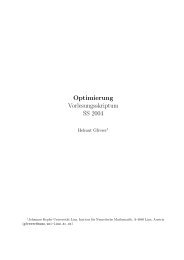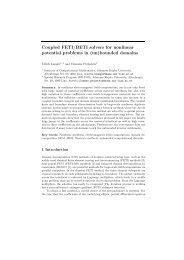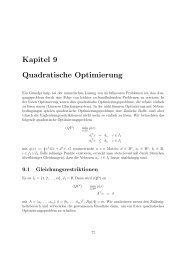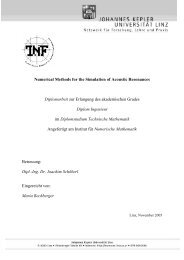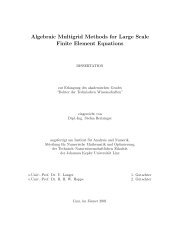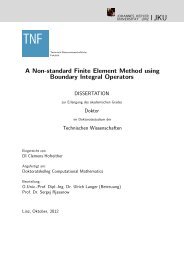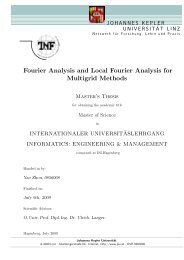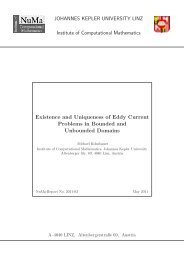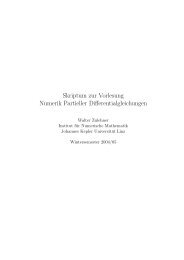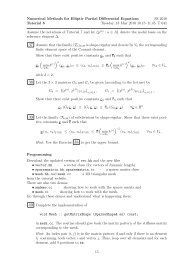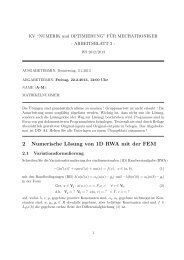Diploma thesis as pdf file - Johannes Kepler University, Linz
Diploma thesis as pdf file - Johannes Kepler University, Linz
Diploma thesis as pdf file - Johannes Kepler University, Linz
Create successful ePaper yourself
Turn your PDF publications into a flip-book with our unique Google optimized e-Paper software.
Introduction<br />
The unknown of the obstacle problem is the deflection of the membrane which<br />
is stretched downward under an acting force and the deformation of which is restricted<br />
from below by an obstacle. Mathematically this problem can be posed<br />
<strong>as</strong> a constrained convex minimization problem, <strong>as</strong> a variational inequality, free<br />
boundary problem or <strong>as</strong> a linear complementarity problem. The mathematical<br />
formulations of this problem appears in many other applications: fluid filtration<br />
in porous media, el<strong>as</strong>to-pl<strong>as</strong>ticity, optimal control and financial mathematics.<br />
The formulations of the obstacle problem and existence of the solution have<br />
been discussed in many works e.g. by G.Stampacchia, L.A.Caffarelli, A.Friedman.<br />
Although there are results on the existence of the solution, it’s difficult to find the<br />
analytical solution in general c<strong>as</strong>e. That’s why the effective methods of the finding<br />
of numerical solution of this problem take important place in applications.<br />
In this work we consider an interior point method for the approximate solution<br />
of the obstacle problem. In chapter 1 we derive the mathematical model and<br />
discuss the existence and uniqueness of the solution. This chapter is b<strong>as</strong>ed mainly<br />
on the works [3] and [4]. In the chapter 2 we construct the interior point method<br />
for the obstacle problem when it’s considered <strong>as</strong> a minimization problem. In<br />
the third chapter the algorithm for the implementation is formulated. We use<br />
piecewise linear finite elements for the approximation of the solution. The part of<br />
this chapter about the finite element error estimate is b<strong>as</strong>ed on the work [8]. And,<br />
finally, we discuss numerical results of several examples.<br />
1



